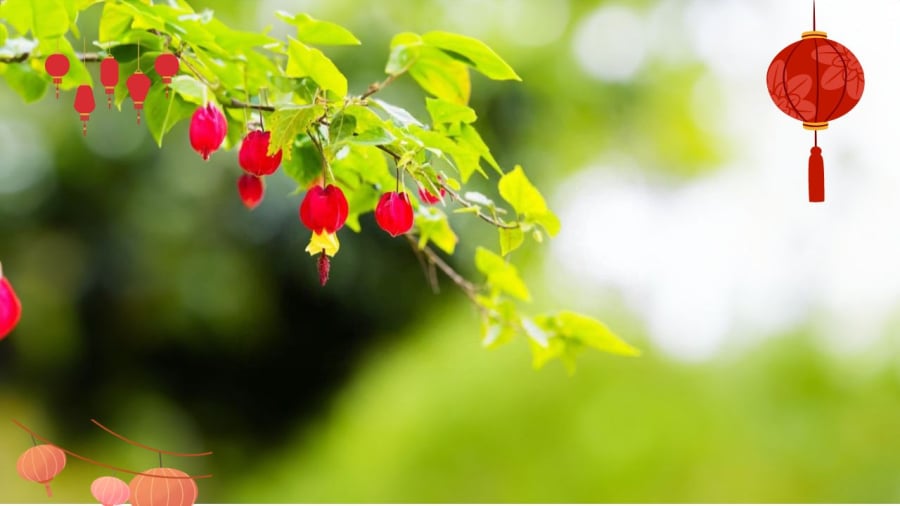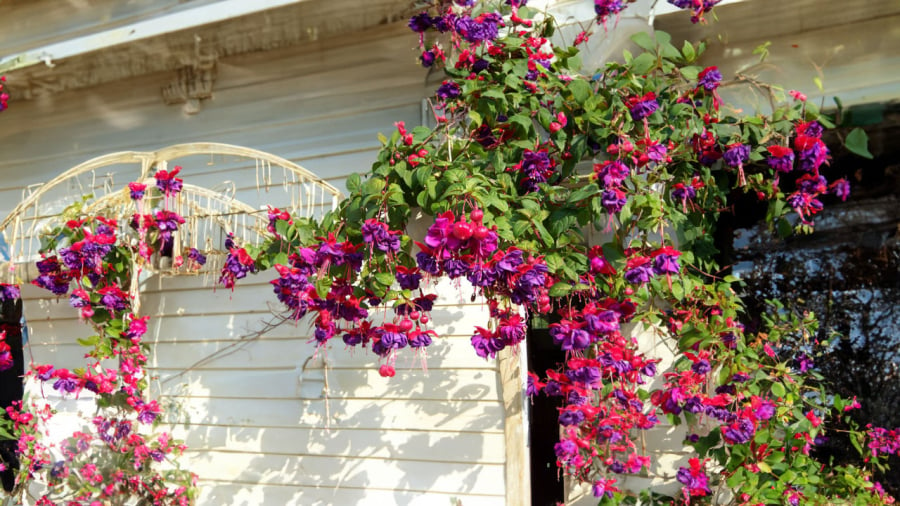What is the Significance of Growing Lantern Trees?
The Lantern Tree, also known as the Bellflower, is a shrub-like ornamental plant with vibrant flowers that resemble lanterns. Native to Brazil, it is widely cultivated in Asian countries. When the lantern flowers bloom, they illuminate the house with their brilliant light, much like lighting thousands of lanterns. In East Asian culture, lanterns symbolize good fortune, festivals, happiness, and success. Therefore, growing a lantern tree is believed to bring luck and prosperity to the household. Lanterns, like fire, are thought to ward off evil spirits.
The lantern tree produces an abundance of flowers that bloom continuously for many days, months, and even years, from summer through autumn to winter and during the Tet holiday. As a result, the tree appears to be in bloom all year round, adding a splash of color and brightness to your home. When the flowers bloom, it is like having thousands of tiny lanterns hanging in your home. The lantern tree is associated with positivity, bringing good fortune, hope, wealth, success, and academic achievements.

Lantern Flowers Bring Cheerful Colors
The lantern tree’s vibrant blooms evoke the joyful spirit of festivals and celebrations. In ancient times, people believed that planting a lantern tree in front of their house would bring good fortune and invite prosperity and wealth into their homes. The lantern tree is thought to bring luck to people of all ages, from the elderly to children.
The blooming of the lantern tree’s flowers is like lighting a bright flame, and since fire is a basic necessity for humanity, you need not worry about whether the tree is compatible with your birth sign. Moreover, the tree’s blooming during the Tet holiday is considered especially auspicious, heralding a new year filled with prosperity, success, and smooth sailing in all endeavors.
As the lantern tree blooms almost year-round, it illuminates your home with a constant glow, much like having a lucky lantern burning perpetually. Typically, lanterns are lit during festivals and special occasions. However, having a lantern tree that blooms continuously throughout the year is considered highly favorable in feng shui, symbolizing happiness, good fortune, and a reason to celebrate life’s joys and festivals every day.
How to Grow a Lantern Tree
The lantern tree is easy to grow and can be propagated through stem cuttings. Here are some care tips for your lantern tree:
Pay Attention to Watering: Lantern trees require adequate moisture, especially during dry seasons. Ensure the soil is well-drained but moist to keep the leaves green and the flowers fresh. Water the tree twice daily without overwatering, and adjust the frequency according to the soil’s dryness.

The Charming Blooms of the Lantern Tree
Use Rich and Well-Drained Soil: Prepare a nutrient-rich, well-drained soil mix for your lantern tree, as it requires ample nutrients to support its abundant flowering. Since lantern trees can be grown in standing or hanging pots and have a climbing habit, ensure you provide a suitable growing medium and repot the plant as it grows. Enrich the soil with organic matter, such as compost, or use materials like tree bark or peanut shells. Apply additional fertilizer when the tree is in bloom to prolong the freshness of the flowers.
Proper Pruning: Regularly prune your lantern tree to maintain a tidy shape and encourage more flowering. When pruning, remember to provide extra water and fertilizer to support the tree’s continued growth.
Light: Lantern trees thrive in bright, sunny locations. Insufficient light will result in paler leaves, reduced flowering, and slower growth.
This information is for reference only and is not intended as professional gardening advice.
2023 Lunar New Year Gift Ideas for Older Family and Friends
As 2021 approaches, families worldwide are gathering to celebrate the special bond between grandparents and their grandchildren. To show their love and admiration, these thoughtfully chosen gifts will bring a smile to the face of the elderly. Here, we have compiled a list of the 13 most meaningful Tet presents that can bring joy to our beloved grandparents.






































